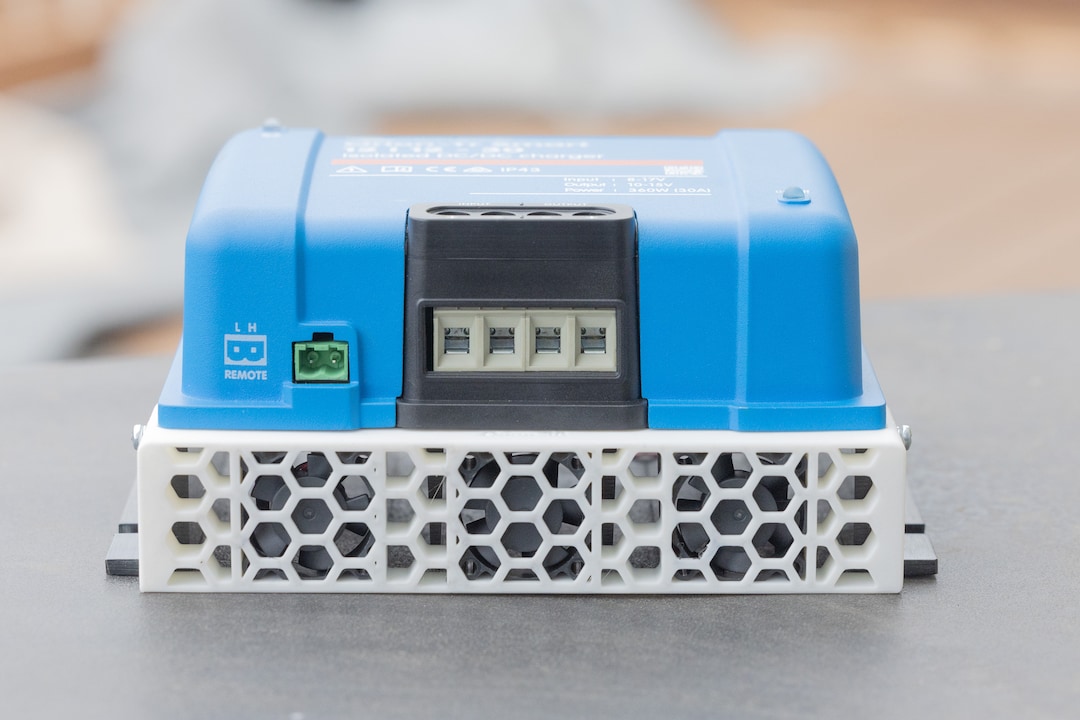Checkthisout
Solar Wizard
- Joined
- Nov 14, 2021
- Messages
- 4,819
Easy to control a fan with the Streetlight function.
That’s pretty slick. Would make my wife happy to not have a janky fan wired up in our only clothes closet in the trailer. ?
Victron Orion DC-DC Charger Cooling Fan Mount 12/12-30 - Etsy Canada
This Car Accessories item by adventureequipment has 42 favorites from Etsy shoppers. Ships from United States. Listed on 26 Mar, 2024www.etsy.com
I wonder if the 100/30 shares the same frame as the 12/12/30 orion. They look similar but I haven't seen the two side by side. Would be a tidy fan set up for it fit.
Now that is cool… never seen one… and cheap too…
Victron Orion DC-DC Charger Cooling Fan Mount 12/12-30 - Etsy Canada
This Car Accessories item by adventureequipment has 42 favorites from Etsy shoppers. Ships from United States. Listed on 26 Mar, 2024www.etsy.com
I wonder if the 100/30 shares the same frame as the 12/12/30 orion. They look similar but I haven't seen the two side by side. Would be a tidy fan set up for it fit.
this thread leads me to believe the Victron MPPTs & DC-DC chargers require a support infrastructure just to deal with the heat! "over-priced Eurotrash" label justified?
Do they harvest more energy? When you consider 10+% loss in Vmp due to panel temperature & 10+% loss in the heatsink, MPPTs' advantage over PWMs is lost.If the end result is more energy harvested, who cares if you have to put a $5.00 PC on the back to keep it cool.
Do they harvest more energy? When you consider 10+% loss in Vmp due to panel temperature & 10+% loss in the heatsink, MPPTs' advantage over PWMs is lost.
note: bold emphasis above is mine.
The op on this thread estimates 35 Watts of heat dissipated. Besides, it's a well known fact that MPPTs deliver only about 90% of the harvested power to the battery bank. The often claimed efficiency of "up to 98%" is when the panel voltage is about 2X the battery bank voltage (25-30Vmp for a 12V bank) and the current is about 50% of the rated max (15 Amps for a 30A controller).Where did you get those numbers?
The op on this thread estimates 35 Watts of heat dissipated. Besides, it's a well known fact that MPPTs deliver only about 90% of the harvested power to the battery bank. The often claimed efficiency of "up to 98%" is when the panel voltage is about 2X the battery bank voltage (25-30Vmp for a 12V bank) and the current is about 50% of the rated max (15 Amps for a 30A controller).
Temperature derating of Si panelss Vmp & Pmp: Cell temps above 25 reduce the Vmp bu about 0.4-0.5%. If the cells are at 45C, the drop in Vmp/Pmp is 20C times 0.5% or 10%. Panels often run much hotter than 45C, and can reach 60C even under moderate ambient temperatures.
If the end result is more energy harvested, who cares if you have to put a $5.00 PC on the back to keep it cool.
I was responding to your question.What does either of these have to do specifically with victron or any given brand for that matter?
In regards to the earlier comment, who on earth is running PWM anymore?
I'm going to go eat paste now.
It's Cyber Monday - paste is probably on sale!Where did you get those numbers?
Those were hard to watch with absolutely nothing conclusive. Pretty janky setup... drawing exterior air in to cool it. That could ether be good or bad. I didn't see it, but if one doesn't document ambient temperature for comparison, the data have far less value.
Anybody that has hefted a Victron MPPT will note that they're pretty dense. They're filled with silica to enhance heat transfer from hot components to the surface, i.e., it's getting heat from the components to the surface faster, and there's a lower delta between the components generating the heat and the radiating surfaces. In other words, while the surface is hotter, the guts aren't as hot as they would be otherwise.
The temperature range of the MPPT is rated at AMBIENT meaning they're designed to work when the cooling air is 60°C, not the unit itself. When ambient is 40°C, the unit may throttle output due to higher internal temps. They're referring to values the user can measure, not the unreported internal temperature of the unit.
Is cooling desirable? Sure. Why not?
Victron MPPTS don't have a "device temp" measurement?


